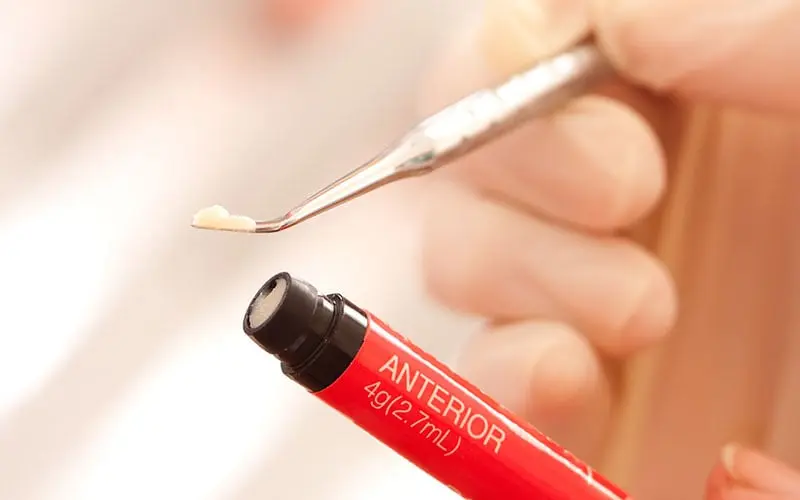Dental filling , Hollywood smile Dental composite resins (better referred to as “resin-based composites” or simply “filled resins“) are types of synthetic resins that are used in dentistry as restorative material or adhesives. Dental composite resins have certain properties that will benefit patients according to the patient’s cavity. It has a micro-mechanic property that makes composite more effective for filling small cavities where amalgam fillings are not as effective and could, therefore, fall out (due to the macro-mechanic property of amalgam). Synthetic resins evolved as restorative materials since they were insoluble, of good tooth-like appearance, insensitive to dehydration, easy to manipulate and reasonably inexpensive. Composite resins are most commonly composed of Bis-GMA and other dimethacrylate monomers (TEGMA, UDMA, HDDMA), a filler material such as silica and in most current applications, a photoinitiator. Dimethylglyoxime is also commonly added to achieve certain physical properties such as flowability. Further tailoring of physical properties is achieved by formulating unique concentrations of each constituent.
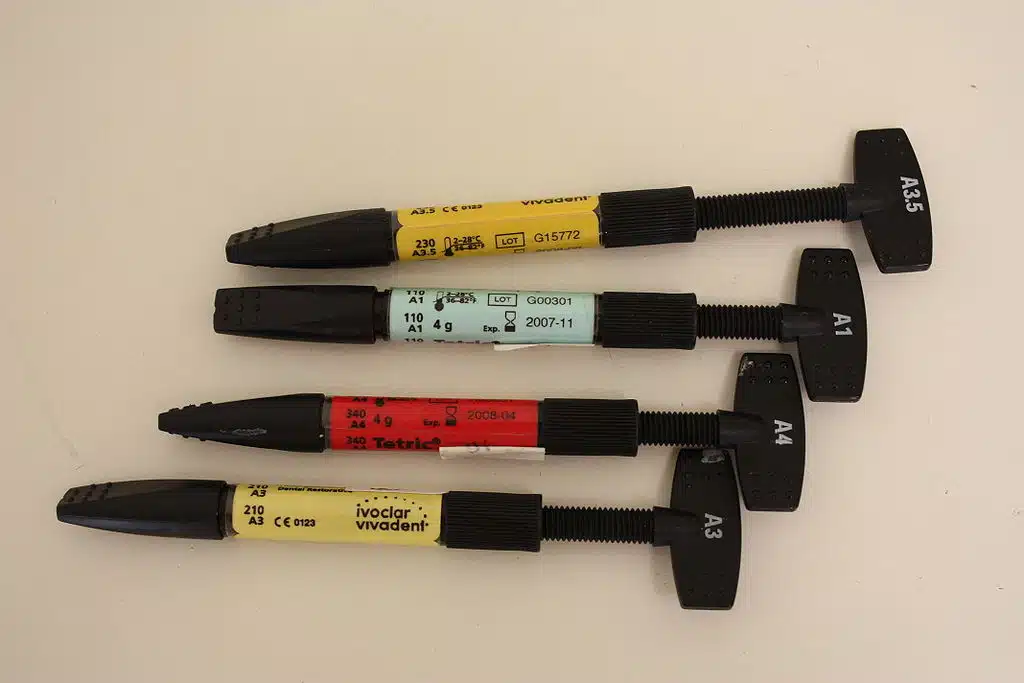
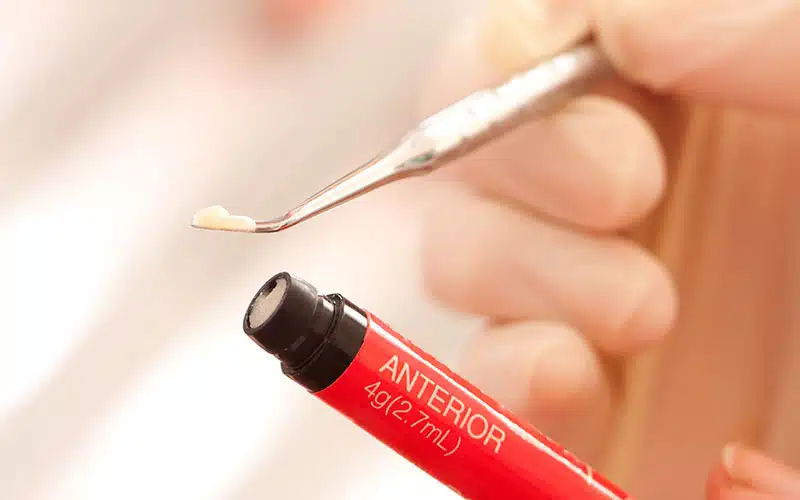
Method and clinical application
Advantages of composites:
- Appearance: The main advantage of a direct dental composite over traditional materials such as amalgam is improved tooth tissue-mimicry. Composites can be in a wide range of tooth colors allowing near invisible restoration of teeth. Composite fillings can be closely matched to the color of existing teeth.
- Bonding to tooth structure: Composite fillings micro-mechanically bond to tooth structure. This strengthens the tooth’s structure and restores its original physical integrity. The discovery of acid etching (producing enamel irregularities ranging from 5-30 micrometers in depth) of teeth to allow a micromechanical bond to the tooth allows good adhesion of the restoration to the tooth. Very high bond strengths to tooth structure, both enamel, and dentin, can be achieved with the current generation of dentin bonding agents.
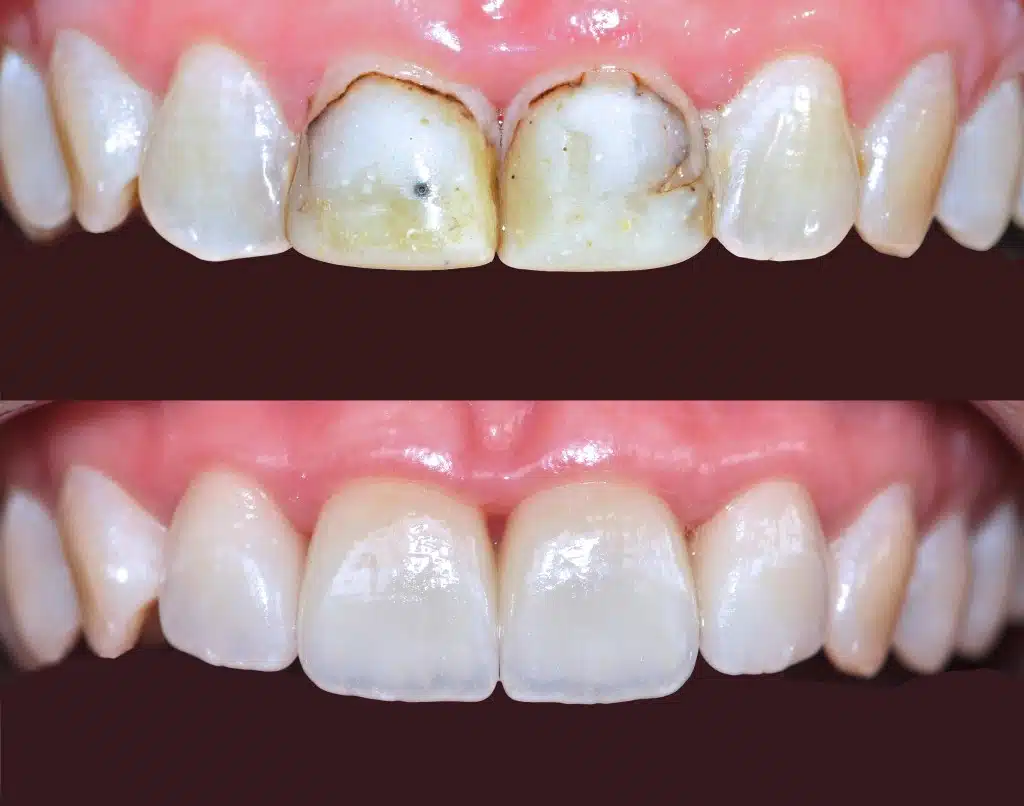
- Tooth-sparing preparation: The fact that composite fillings are glued (bonded) to the tooth means that unlike amalgam fillings, there is no need for the dentist to create retentive features destroying healthy tooth. Unlike amalgam, which just fills a hole and relies on the geometry of the hole to retain the filling, composite materials are bonded to the tooth. In order to achieve the necessary geometry to retain an amalgam filling, the dentist may need to drill out a significant amount of healthy tooth material. In the case of a composite restoration, the geometry of the hole (or “box”) is less important because of composite filling bonds to the tooth. Therefore less healthy tooth needs to be removed for a composite restoration.
- Less-costly and more conservative alternative to dental crowns: In some situations, a composite restoration may be offered as a less-expensive (though possibly less durable) alternative to a dental crown, which can be a very expensive treatment. Installation of a dental crown usually requires removal of significant healthy tooth material so the crown can fit over or into the natural tooth. Composite restoration conserves more of the natural tooth.
- Alternative to tooth removal: Because composite restoration bonds to the tooth and can restore the original physical integrity of a damaged or decayed tooth, in some cases composite restoration can preserve a tooth that might not be salvageable with amalgam restoration. For example, depending on the location and extent of decay, it might not be possible to create a void (a “box”) of the geometry necessary to retain an amalgam filling.
- Versatility: Composite fillings can be used to repair chipped, broken or worn teeth which would not be repairable using amalgam fillings.
- Repairability: In many cases of minor damage to a composite filling, the damage can be easily repaired by adding additional composite. An amalgam filling might require complete replacement.
- Reduced quantity of mercury released to the environment: Composites avoid mercury environmental contamination associated with dentistry. When amalgam fillings are drilled for height adjustment, repair or replacement, some mercury-containing amalgam is inevitably washed down drains. (See Dental amalgam controversy – Environmental impact) When amalgam fillings are prepared by dentists, improperly disposed of excess material may enter landfills or be incinerated. Cremation of bodies containing amalgam fillings releases mercury into the environment.
- Reduced mercury exposure for dentists: Preparing new amalgam fillings and drilling into existing amalgam fillings exposes dentists to mercury vapor. Use of composite fillings avoids this risk unless the procedure also involves removing an existing amalgam filling. A review article found studies indicating that dental work involving mercury may be an occupational hazard with respect to reproductive processes, glioblastoma (brain cancer), renal function changes, allergies, and immunotoxicological effects.
- Lack of corrosion: Although corrosion is no longer a major problem with amalgam fillings, resin composites do not corrode at all. (Low-copper amalgams, prevalent before 1963, were more subject to corrosion than modern high-copper amalgams. )
- Dental filling, Hollywood smile
Disadvantages
- Composite shrinkage and secondary caries: In the past, composite resins suffered significant shrinkage during curing, which led to inferior bonding interface. Shrinkage permits microleakage, which, if not caught early, can cause secondary caries (subsequent decay), the most significant dental disadvantage of composite restoration. In a study of 1,748 restorations, the risk of secondary caries in the composite group was 3.5 times the risk of secondary caries in the amalgam group. Good dental hygiene and regular checkups can mitigate this disadvantage. Most current micro-hybrid and nanohybrid composites have a polymerization shrinkage that ranges from 2% to 3.5%. Composite shrinkage can be reduced by altering the molecular and bulk composition of the resin. In the field of dental restorative materials, reduction of composite shrinkage has been achieved with some success. Among the newest materials, silorane resin exhibits lower polymerization shrinkage, compared to the dimethacrylates.
- Durability: In some situations, composite fillings may not last as long as amalgam fillings under the pressure of chewing, particularly if used for large cavities.
- Chipping: Composite materials can chip off the tooth.
- Skill and training required: Successful outcomes in direct composite fillings is related to the skills of the practitioner and technique of placement. For example, a rubber dam is rated as being important for achieving longevity and low fracture rates similar to amalgam in the more demanding proximal Class II cavities.
- Need to keep working area in mouth completely dry: The prepared tooth must be completely dry (free of saliva and blood) when the resin material is being applied and cured. Posterior teeth (molars) are difficult to keep dry. Keeping the prepared tooth completely dry can also be difficult for any work involving treatment of cavities at or below the gumline.
- Time and expense: Due to the sometimes complicated application procedures and the need to keep the prepared tooth absolutely dry, composite restorations may take up to 20 minutes longer than equivalent amalgam restorations. Longer time in the dental chair may test the patience of children, making the procedure more difficult for the dentist. Due to the longer time involved, the fee charged by a dentist for a composite restoration may be higher than for an amalgam restoration.
- Limited insurance coverage: Some dental insurance plans may provide reimbursement for composite restoration only on front teeth where amalgam restorations would be particularly objectionable on cosmetic grounds. Thus, patients may be required to pay the entire charge for composite restorations on posterior teeth. For example, one dental insurer states that most of their plans will pay for resin (i.e. composite) fillings only “on the teeth where their cosmetic benefit is critical: the six front teeth (incisors and cuspids) and on the facial (cheek side) surfaces of the next two teeth (bicuspids).” Even if charges are paid by private insurance or government programs, the higher cost is incorporated in dental insurance premiums or tax rates.Dental filling Hollywood smile
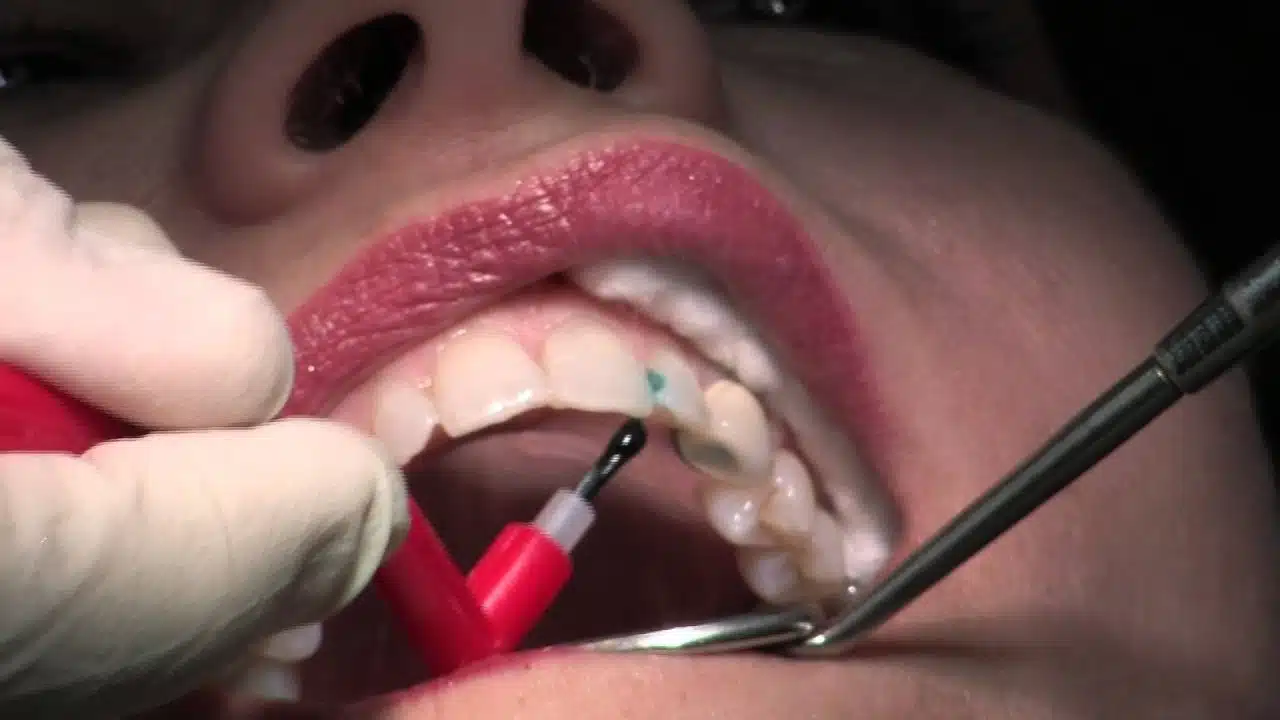
What steps are involved in filling a tooth?
- How long do dental fillings last?
- How much does it cost to go to the dentist without insurance?
- Which filling is best for teeth?
- Does dental insurance cover fillings?
- Do fillings fall out.


